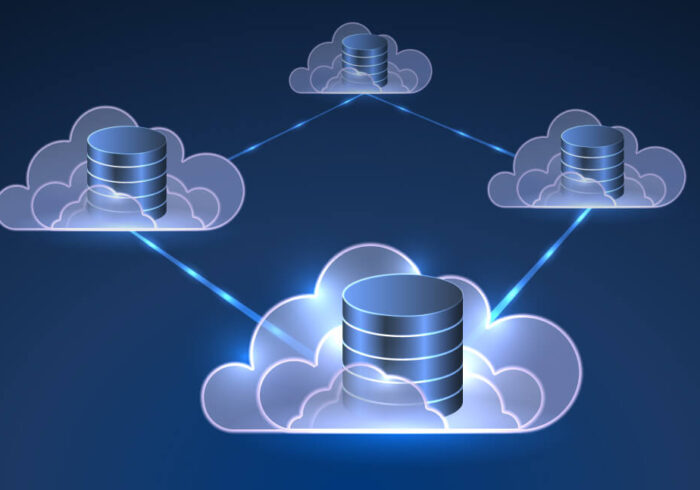5G New Radio (NR) introduces a series of new channels and signals for efficient communication between the 5G network and User Equipment (UE). These are essential in ensuring robust downlink (DL) and uplink (UL) communication. In 5G NR, several foundational concepts and practices from LTE continue, but there are critical new features enhancing flexibility and scalability in channel structure and reference signals. So, now let us look into Understanding 5G NR Downlink Physical Channels along with Accurate LTE RF drive test tools in telecom & RF drive test software in telecom and Accurate Best wireless site survey software, site survey tools for wireless networks & Indoor cellular coverage walk testing tool in detail.
- Physical Broadcast Channel (PBCH)
The Physical Broadcast Channel, or PBCH, transmits system-wide information from the 5G network to user devices. Specifically, it carries data through the Master Information Block (MIB), which includes the basic parameters necessary to decode the Physical Downlink Control Channel (PDCCH). These parameters help user equipment begin decoding additional channels.
In 5G NR, the PBCH sends key information about subcarrier spacing, especially for frequencies below 6 GHz, where spacings are set at either 15 kHz or 30 kHz. The PBCH enables a Control Resource Set (CORESET), which is a specific frequency and time resource block used for PDCCH in 5G NR. CORESET’s configuration makes it somewhat analogous to LTE’s control region, although CORESET is flexible in frequency domain size and can have several setups.
- Physical Downlink Control Channel (PDCCH)
PDCCH in 5G NR retains similarities with LTE in that it transports Downlink Control Information (DCI), including DL resource allocation, UL scheduling, and power control commands. However, 5G NR adds unique enhancements through CORESET and REG Bundle units, making resource allocation more efficient.
PDCCH operates across both common and UE-specific search spaces, allowing the UE to detect PDCCH transmission more accurately. DCI specifies the format for resource allocation in PDCCH, guiding the allocation of resources for the Physical Downlink Shared Channel (PDSCH). This includes assigning resource blocks (RBs) and OFDM symbols in both the frequency and time domains. Unlike LTE’s fixed subframe system, 5G NR allows flexible start times and durations within the OFDM symbol structure.
- Physical Downlink Shared Channel (PDSCH)
Unlike LTE, where transport parameters are mostly fixed, 5G NR allows extensive configuration through DCI and Radio Resource Control (RRC) signaling, making it more adaptable and responsive to network demands.
This channel uses reference signals to assist with the demodulation and decoding process. Demodulation reference signals (DM-RS) embedded in the PDSCH help with decoding the data. The PDSCH’s configurability enhances network adaptability, providing for better data handling and resource allocation depending on network load and user demands.
- Reference Signals in 5G NR
5G NR employs several types of reference signals, each serving a specific role. One major shift from LTE is the replacement of Cell-Specific Reference Signals (CRS) with the PDSCH DM-RS, which transmit only in designated RBs, minimizing inter-cell interference. NR’s reference signals support various deployment scenarios and can be tailored to different network requirements, making it adaptable across spectrum ranges.
- Synchronization Signal Block (SSB)
The SSB combines the Primary and Secondary Synchronization Signals (PSS and SSS) and the PBCH, providing initial connection support for UE. This combined block aids in time/frequency synchronization and cell identification. Unlike LTE’s fixed center frequency, the SSB in 5G NR can adjust its frequency position to adapt to different network needs.
SSB broadcasts in a periodic pattern to support beamforming. This setup assists UE in identifying the nearest cell and in aligning with the beamforming techniques often used in 5G NR deployments, including Massive MIMO and beam sweeping, which maximize signal quality by dynamically adjusting beam directions.
- Beamforming and Beam Sweeping
Beamforming in 5G NR, supported by the SSB, enhances signal strength and coverage by targeting specific directions. Beam sweeping, a component of beamforming, ensures that basic system information is distributed across multiple beams, ensuring comprehensive coverage. 5G base stations with advanced antenna arrays can vary the beam shapes to suit particular needs—whether wide, for broader coverage in open areas, or narrow, for reaching high-rise buildings or distant locations.
- Physical Cell Identity (PCI)
5G NR maintains LTE’s concept of Physical Cell Identity (PCI), allowing UEs to differentiate among cells. The PSS and SSS provide synchronization for each cell and help assign cell IDs. 5G NR offers a broader range of PCI options than LTE, from 0 to 1007, with multiple groupings to avoid interference. Planning PCI mod 3 remains recommended for ensuring minimal overlap in PSS transmission, allowing UEs to differentiate multipath signals from the same cell.
- Demodulation Reference Signals (DM-RS)
DM-RS, which assist with downlink data demodulation and synchronization, are critical in 5G NR for supporting high-speed and high-density user environments. 5G NR offers Type 1 DM-RS for single-user MIMO and Type 2 DM-RS for multi-user MIMO. These provide diverse options for network configuration, depending on the number of required orthogonal ports and the presence of OFDM symbols, improving signal robustness and quality under varying traffic conditions.
DM-RS also has distinct time-frequency mappings, allowing dynamic placement of reference signals within slots for optimal signal adaptation in both downlink and uplink configurations. This flexibility supports transmission schemes like DFT-S-OFDM for uplink, adding efficiency in data handling without requiring uplink MIMO.
- Channel State Information (CSI) and Tracking Reference Signals (TRS)
CSI-RS assists with evaluating network channel conditions, enabling the UE to provide feedback for optimized downlink transmission. CSI-RS includes periodic, aperiodic, and semi-persistent transmission options, each suited to different latency and feedback requirements. Tracking Reference Signals (TRS), a subset of CSI-RS, are specifically used to estimate time-frequency offset and Doppler spread, aiding UEs in maintaining connection stability as they move across cells.
- Phase Tracking Reference Signals (PT-RS)
Phase Tracking Reference Signals (PT-RS) play an essential role in maintaining signal clarity, particularly in high-frequency bands where phase noise may affect demodulation accuracy. Associated with DM-RS, PT-RS helps counter phase distortion, enhancing the reliability of PDSCH and PUSCH channels for UEs in challenging network environments.
- Sounding Reference Signals (SRS)
Sounding Reference Signals (SRS) are used primarily for uplink performance evaluation. However, in Time Division Duplex (TDD) mode, SRS can also assist with downlink channel estimation. SRS operates in periodic, aperiodic, and semi-persistent modes and supports carrier switching, which enables it to transmit signals across multiple carriers from a single uplink. This maximizes the potential of uplink capacity, especially in environments requiring high throughput.
Conclusion
5G NR downlink physical channels and reference signals are at the core of the technology’s ability to deliver flexible, high-performance wireless connectivity. With channels like PBCH, PDCCH, and PDSCH, and an array of advanced reference signals, 5G NR networks are equipped to handle varied demands in urban and rural settings alike. The detailed structure of these channels, along with innovative tools like beamforming and flexible CSI-RS, collectively set 5G NR apart as a highly adaptable and efficient communication system, ushering in the next generation of mobile connectivity.
About RantCell
RantCell is a powerful mobile app that streamlines network testing, monitoring, and reporting, delivering real-time insights on key performance metrics like signal strength, download speeds, and latency—all accessible right from your smartphone. Created for telecom operators and businesses, RantCell’s user-friendly interface and cloud-based platform make improving network quality easier than ever.
With RantCell, there’s no need for expensive testing equipment; it provides flexible testing options across both urban and rural settings, ensuring accurate results whenever and wherever needed. Also read similar articles from here.





